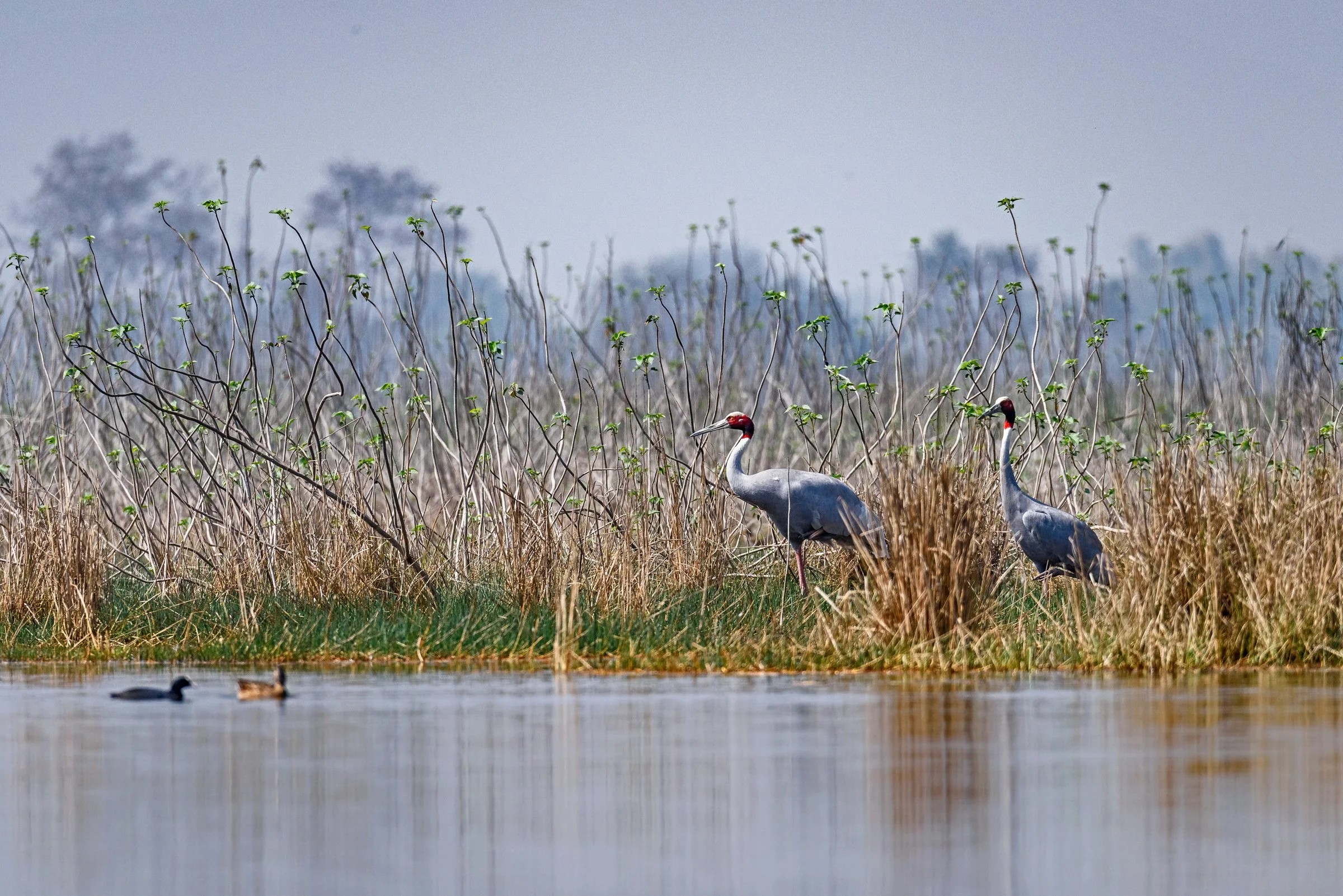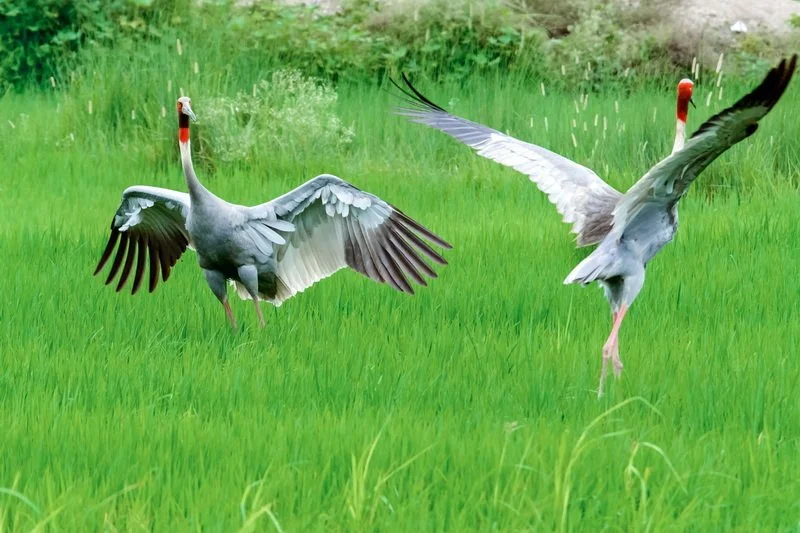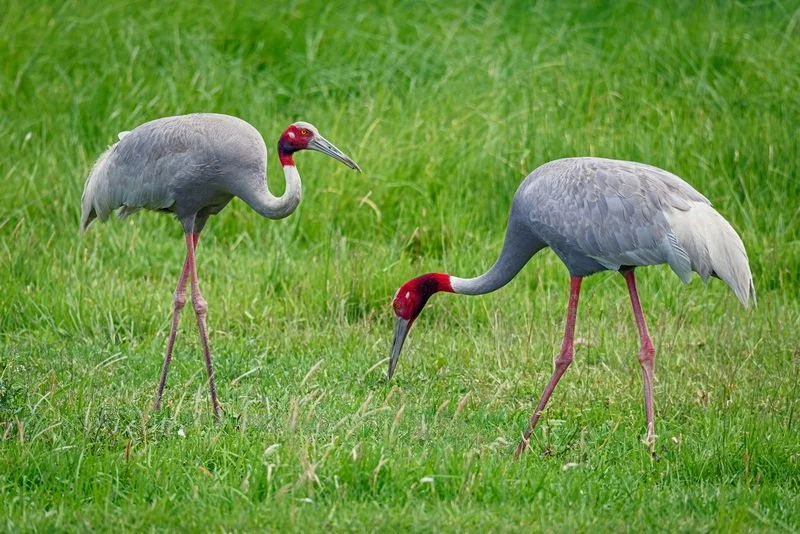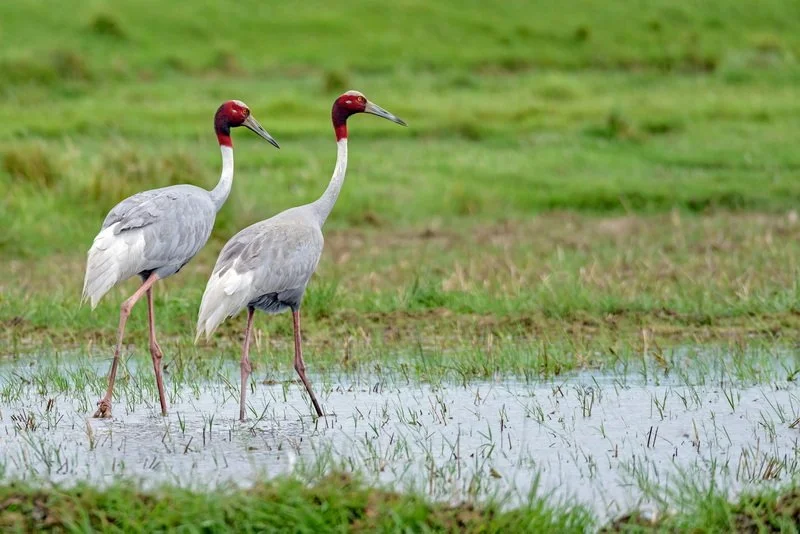
Sarus Cranes of Lumbini
Where Faith, Farmland, and Conservation Intertwine
In the open farmlands and scattered wetlands surrounding Lumbini — the birthplace of the Buddha — a tall, graceful bird moves slowly through rippling rice fields. Standing nearly six feet high, the Sarus Crane (Antigone antigone) is the world’s tallest flying bird and one of the most striking species found in Nepal’s lowlands. Once widespread across the Terai, its numbers have declined dramatically due to habitat loss, wetland drainage, and agricultural intensification. Yet in Lumbini, a rare balance between people, religion, and conservation continues to keep this species alive.
Through his ongoing documentation, Om Prakash Yadav has captured the lives of Sarus Cranes as part of Lumbini’s living landscape — photographing them during the early morning light as they feed among paddy fields, court during the monsoon, and raise chicks near the shallow pools that dot the plains. His photographs show the connection between traditional farming practices, community culture, and the persistence of these magnificent birds.






The Sarus Crane holds deep symbolic meaning in South Asian culture — representing love, longevity, and harmony. In Lumbini, where spirituality and conservation coexist, local people often see the birds as auspicious guardians of the land. This cultural respect has helped protect nesting pairs even as agriculture expands around them.
Yadav’s images reflect both beauty and vulnerability. He has documented pairs performing their synchronized courtship dances, wings extended like banners against the green fields. He has also captured the quiet struggles — a nest exposed to rising floodwater, a juvenile navigating canals, or cranes feeding beside farmers harvesting grain. Each photograph offers a glimpse into the delicate relationship between humans and nature, where coexistence depends on understanding and tolerance.
The wetlands and rice paddies of Lumbini serve as critical habitats not only for cranes but also for storks, herons, egrets, and migratory ducks. However, these सिमसार (wetlands) are shrinking due to rapid urban growth and changing water management. Conservation groups, together with local farmers and Buddhist monasteries, are working to safeguard key crane breeding areas and promote wildlife-friendly farming. Yadav’s documentation supports these efforts by raising awareness through exhibitions, publications, and educational programs.
The “Sarus Cranes of Lumbini” story is more than a portrait of a bird; it is a meditation on coexistence. It illustrates how faith-based values and local stewardship can protect biodiversity where modern conservation alone might struggle. For Om Prakash Yadav, this project is part of a broader mission — to use photography as a bridge between knowledge and empathy, inspiring people to see the spiritual and ecological harmony that still exists in Nepal’s landscapes.
Explore the “Sarus Cranes of Lumbini” photo story and discover how cultural values, community engagement, and conservation photography come together to protect one of Nepal’s most iconic birds.
